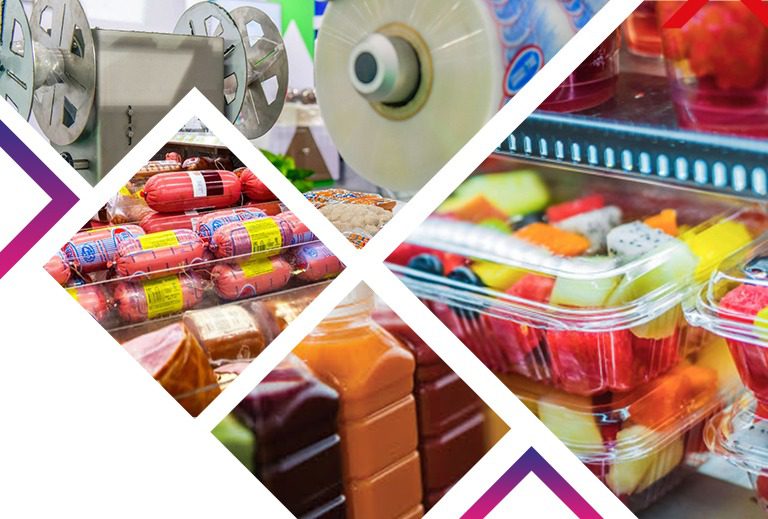How Plastics Food Packaging Will Preserve the Food Industry in the Future
Food packaging ranks among the most critically important processes in the food industry. Modern packaging is designed to protect food from biological, chemical, and physical alterations while providing the desired longevity. Ideal food packaging offers a practical means to protect and deliver foods in a budget-friendly manner while meeting the expectations of consumers and food producers.
Plastic has a long association with the food packaging industry. Perhaps the first instance of using plastic to package material was during World War II. Back then, plastic was used to protect military equipment. After the war, commercialization of the food packaging industry witnessed plastic becoming the go-to and preferred material to wrap foods. It’s a practise that continues to this day.
Plastic films and other plastic derivatives have excelled in their role as efficient food packaging material. By efficiently packaging foods and prolonging its life, plastic material has helped to:
- Control food wastage to a significant extent. Foods that are not packaged properly often end up getting spoilt sooner than its intended lifetime. These foods are then disposed of prematurely in landfills. Food rotting then sets in with risky gases such as methane being produced in significant numbers.
- Restrict the production of greenhouse gases. Methane is a greenhouse gas that has contributed significantly to global warming. Moreover, the process of transporting and disposing of food contributes more gases that damage the environment.
- Recognize the resources needed to grow produce food. It’s not easy to grow food. You need access to water, manpower, fertilizers and a lot of other farming aids. These foods are then further used as ingredients to produce diverse food products. Wasting food will mean that you are wasting the diverse resources that helped grow it.
The benefits of plastics for the present and future of food packaging
Plastic packaging boasts of characteristics that makes them indispensable to the food manufacturing world. Plastic is lightweight and tough, resulting in a lower footprint in the environment than most alternatives. Plastic packaging provides barriers to light, oxygen, temperatures, microbes, moisture, critters, and dirt.
Plastic film can increase shelf life of meat 10 times more than meat wrapped through traditional means, resulting in 75% less food wastage. Sealed plastic bags and containers help preserve the texture, flavour, and nutrients of foods by keeping air out and preventing the absorption of nasty flavours and odours.
The impact of food wastage on the environment is ten times greater than the impact of packaging. The ability of plastics to control food wastage and reduce energy use and environmental impact has made it the preferred choice in the packaging industry. Plastic will be playing an important role for generations to come to control food wastage globally.
If you are part of the plastic manufacturing industry or wish to know how plastic packaging can benefit your business, then you should be a part of Plastivision 2023. It will be held from December 7 to 11, 2023 and promises to be a spectacular event for stakeholders in the plastic industry. Be a part of it to learn about latest innovations that can benefit your business immensely.
References
Plastic Packaging and Food Storage | Plastics Make it Possible
Leave a Reply Cancel reply
Recent Posts
- Understanding The Materials That Are Used To Build Plastic Toys
- All You Need To Know About Food-grade Plastics
- A Glance At The Materials That Boost The Performance Of Plastics
- Understanding The Importance Of Exploring New Business Opportunities In The Plastic Industry
- Understanding The Importance Of Investing in R&D For The Plastic Industry
Categories
- 3D Printing
- AIPMA
- Automation
- Automobile Sector
- Bio Plastics
- Environment
- Innovations In Recycling
- Latest Innovations
- Molds & Dies
- News
- Packaging Industry
- Plastic
- Plastic Application
- Plastic Industry
- Plastic Market
- Plastic Myths
- Plastic News From The World
- Plastic Packaging
- Plastic Products
- Plastic Recycling
- Plastic Solar Cells
- Plastic Toys
- Plastic Waste
- Plastic World
- Plastics
- Plastics And Their Applications
- Plastics In Agriculture
- Plastics In Healthcare
- Plastics In Medical Industry
- Plasticulture
- Processing Machinery
- Recycling Machines
- Robotics
- Uncategorized
- Virtual Reality
Archives
- November 2023 (3)
- October 2023 (2)
- September 2023 (3)
- August 2023 (3)
- July 2023 (3)
- June 2023 (3)
- May 2023 (2)
- April 2023 (2)
- March 2023 (2)
- February 2023 (2)
- January 2023 (2)
- December 2022 (3)
- November 2022 (1)
- October 2022 (1)
- September 2022 (2)
- August 2022 (1)
- July 2022 (3)
- May 2022 (3)
- March 2022 (2)
- February 2022 (1)
- January 2022 (1)
- September 2021 (2)
- August 2021 (3)
- July 2021 (4)
- June 2021 (4)
- May 2021 (3)
- April 2021 (2)
- March 2021 (4)
- November 2019 (8)
- October 2019 (8)
- September 2019 (8)
- August 2019 (8)
- July 2019 (8)
- June 2019 (8)
- May 2019 (8)
- April 2019 (8)
- March 2019 (8)
- February 2019 (11)
- January 2019 (8)
- December 2018 (8)
- November 2018 (12)
- October 2018 (12)

